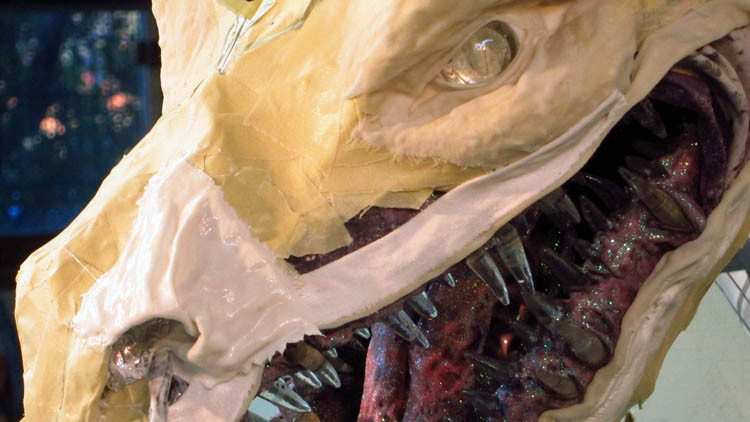When is paper maché not paper maché? When it is cloth, of course. [Dan Reeder] has been putting his own spin on paper maché art since the 70s and demonstrates the technique of using cloth for tricky spots in his outstanding sculpture of an Ice Dragon. Thin strips of cloth are used just as paper would be, but give a much different structure and grant natural-looking folds to spots like eyelids, nostrils, and lips.
 [Dan] feels that paper maché is an under-utilized and under-rated medium, and he puts out some stunning work on his blog as well as his YouTube channel. What’s great to see are his frank descriptions and explanations of what does and doesn’t work, and he’s not afraid to try new things and explore different ways to approach problems.
[Dan] feels that paper maché is an under-utilized and under-rated medium, and he puts out some stunning work on his blog as well as his YouTube channel. What’s great to see are his frank descriptions and explanations of what does and doesn’t work, and he’s not afraid to try new things and explore different ways to approach problems.
Enterprising hackers may not pick paper maché as their first choice to create creating custom enclosures, but it can be done and the accessibility and ease of use of the medium are certainly undeniable. One never knows when a tool or technique may come in handy.
















It’s “papier mâché”. If you’re doing French, you might as well do it for both words.
Literally, it means “chewed paper”.
I came here to say the same thing, but I checked google first. “paper mache” is much more popular than “papier mache”. However, google doesn’t account for accented letters. So it is impossible to use google determine the prevalence variations of those.
That said, I am unaware of any instance with an accented e but unaccented a. And I am unaware of any use of the accented letters in english versions of the term.
In my research, I came across the wikipedia article for papier mâché. Turns out textile use is somewhat common in papier mâché and other materials are also used for reinforcement like:” wire, chicken wire, lightweight shapes, balloons or textiles”. So yeah, this is still papier mâché.
I think you may need more eyes reviewing articles before they are published here.
Everyone doing any sort of custom stuff should get a copy of The Prop Builder’s Molding & Casting Handbook by Thurston James. While many of the materials shown in it may be considered obsolete, they’re still available and they still work. the techniques shown also work with newer materials.
One big change from when this book was originally published is nobody in professional effects uses ‘candy glass’ now. It’s too time consuming to make and time is money. Its difficult to cast bubble free items and if you make something like a bottle or mug too thick it can injure a person hit with it. Since it has to be heated there’s the danger of overheating and possibly burning.
The replacements are specially formulated urethane resins like rubber glass and smash. Rubber glass is soft and easily crumbled after curing. It looks like chunks of ice or shattered tempered glass. Smash is rigid yet breaks easily into pieces that don’t have sharp edges. Costs more and the chunks can’t be scooped up and remelted, but ease of use, clarity, and better safety matter more for effects than price nowadays.